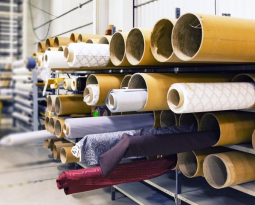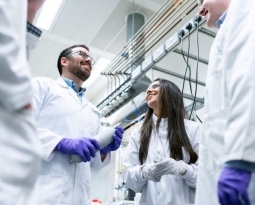Maine Patent of the Month – August 2021
Power generation systems use power cycles to convert heat into mechanical work. Most thermodynamic power generation cycles use an ideal gas – like atmospheric air – and water as a working medium. These processes exhausts air back to the atmosphere at high temperatures which results in the loss of a considerable amount of heat. Some cycles – like the Brayton cycle – use a recuperator to extract heat from the turbine exhaust gas and transfer it to the air discharging from the compressor. Unfortunately, even these recuperation cycles can only do so much. Peregrine Turbine Technologies, LLC. has designed a novel heat exchanger that overcomes these limitations, improving efficiency overall.
In cycles like the Brayton cycle, the power generation system uses two fluids – typically one supercritical fluid and one fluid like ambient air. The heat exchanger has plate assemblies with plates stacked along each other. These plates allow a heat transfer from one fluid to another. Each plate assembly is surrounded by a casing which applies a tension force so that, when exposed to a predetermined temperature, the plate expands to reduce the tension force. The casing and plates are each different materials so that they expand at different temperatures and limit the forces applied during operation, ultimately reducing thermal fatigue stresses. A stream of supercritical fluid is supplied to a compressor which connects to a turbine. A flow meter measures the flow rate of the supercritical fluid and controls transient flow behavior. In the air breathing cycle, ambient air is supplied to an air breathing compressor. This air is then heated in the heat exchanger by the transfer of heat from the mixed stream, and directed back to the heat exchanger. The discharge stream is directed to the combustor which raises the temperature of the compressed air stream. It is then directed to the turbine, where it is expanded. The entire design aims to reduce axial forces during operation, which manages to enhance efficiency and improve the power generating cycle in numerous ways. Specifically, it better manages fluid flow cycles and improves heat transfer efficiency.
Are you developing new technology for an existing application? Did you know your development work could be eligible for the R&D Tax Credit and you can receive up to 14% back on your expenses? Even if your development isn’t successful your work may still qualify for R&D credits (i.e. you don’t need to have a patent to qualify). To find out more, please contact a Swanson Reed R&D Specialist today or check out our free online eligibility test.
Who We Are:
Swanson Reed is one of the U.S.’ largest Specialist R&D tax advisory firms. We manage all facets of the R&D tax credit program, from claim preparation and audit compliance to claim disputes.
Swanson Reed regularly hosts free webinars and provides free IRS CE and CPE credits for CPAs. For more information please visit us at www.swansonreed.com/webinars or contact your usual Swanson Reed representative.

















